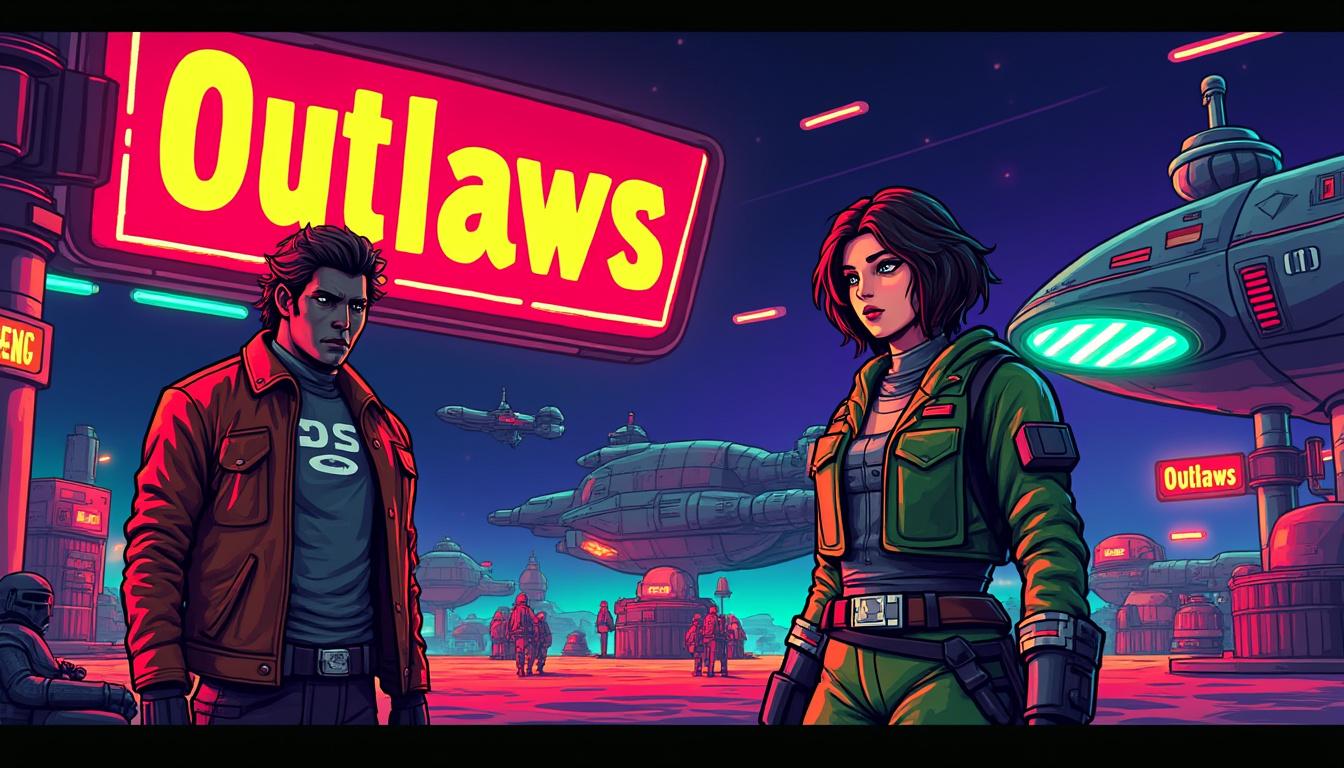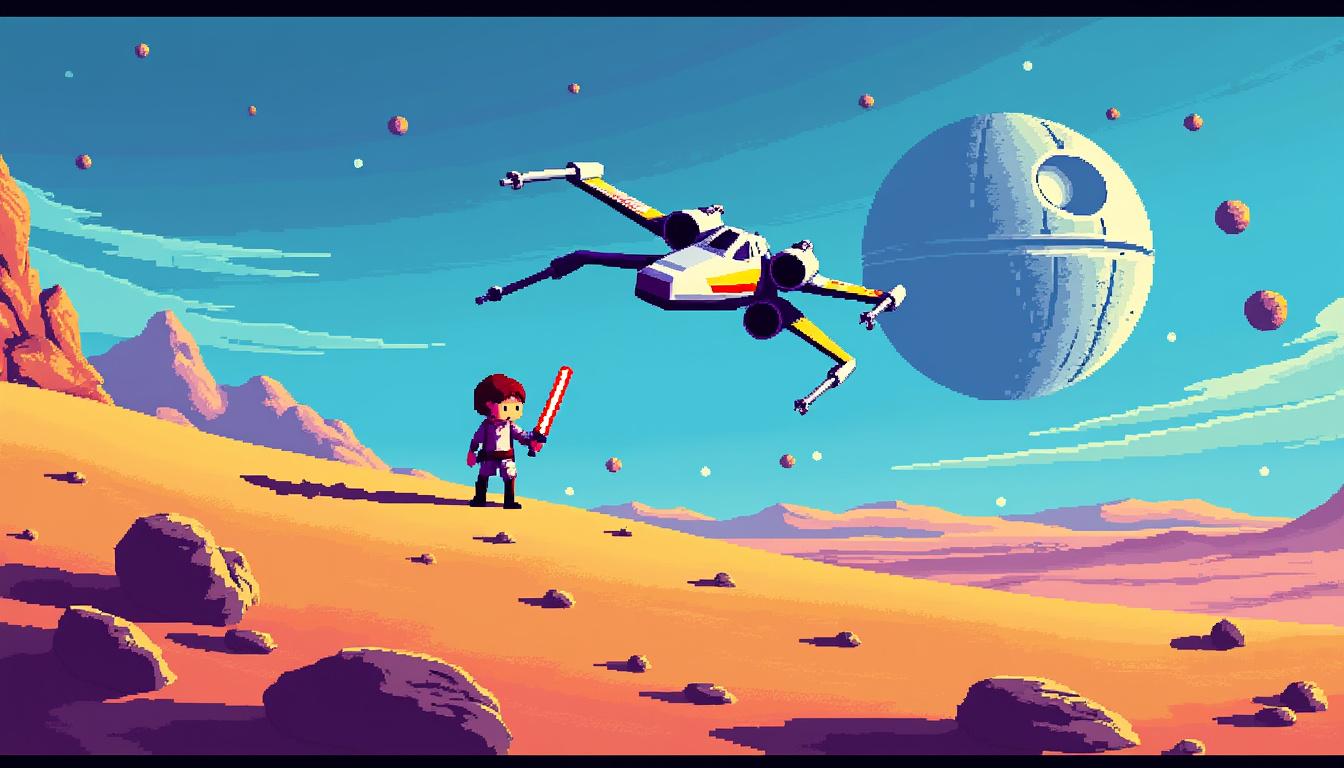The recent release of ‘The Art of Star Wars: Outlaws’ delves deeply into the creative processes behind one of the most anticipated installments in the Star Wars franchise. This resource offers a wealth of artistic visualizations, character designs, and insights that reveal the intricate world built by Ubisoft and Massive Entertainment. It serves as a compelling testament to the multifaceted nature of game design, showing the behind-the-scenes efforts that shape the narrative universe of Star Wars.
Exploring the Creative Foundations of Star Wars: Outlaws
The book encapsulates the journey of designing an open-world game set in the iconic Star Wars universe. It begins by highlighting the collaborative efforts among the talented artists, ranging from concept artists to environmental designers. Each piece of artwork plays a critical role in establishing an atmosphere reflecting the overarching themes of danger, rebellion, and survival found within the game’s storyline.

Collaboration Across Disciplines
Teamwork was paramount in the development of ‘Star Wars: Outlaws.’ The complexity of the game demanded input from various specialists, each contributing their unique skills to craft a cohesive experience. The following groups were crucial in the project:
- 🎨 Concept Artists: Pioneered the visual style and character designs.
- 🗺️ Environmental Designers: Created the immersive worlds players explore.
- 💻 3D Modelers: Brought the artistic visions to life in a digital format.
- 🎤 Voice Actors and Motion Capture Artists: Provided personality and depth to characters.
This collaborative approach allowed for a rich tapestry that feels authentic to the Star Wars saga. The interconnectedness of the art styles draws from multiple sources, reflecting a dedication to preserving the integrity of the franchise.
Character Design and Development
Character designs are often the centerpiece within any Star Wars project, embodying the essence of the story. The evolution of key characters like Kay Vess and Nix illustrates how developers navigated complex design challenges. For instance, Nix, originally conceived as an inconspicuous creature, grew into a vital gameplay component. This transformation necessitated balancing both cuteness and a certain menacing edge. Design sketches evolved as follows:
| Character Design Phase | Key Characteristics | Evolution |
|---|---|---|
| Initial Concept | Basic creature design | Lacked personality |
| Developed Look | Cute yet ferocious | Inspired by real pets |
| Final Design | Dynamic gameplay elements | Enhanced appeal |
This layered process of character development is a reflection of the broader scope within the game, demonstrating how methodical analysis of design outcomes can yield superior results.
Cultural Influences in the Artistic Direction
Beyond the technical aspects, cultural influences permeate the art direction seen in ‘Star Wars: Outlaws.’ The developers drew from an array of artistic inspirations to forge a unique visual narrative that resonates with the themes of the saga. One prominent aesthetic comes from the richness of African savanna landscapes, which shaped the game’s primary hub world, Toshara. The goal was to create an environment that feels both unsettling and familiar.
World-Building and Environmental Design
The effort dedicated to Toshara exemplifies how visual storytelling can anchor a player’s experience. This planet is designed with a singular focus on a valuable resource, known as amberine, underscoring the hosts’ reliance on and reverence for their environment. In contrast, the Imperial comm station stands stark against this natural landscape, showcasing the Empire’s disregard for ecological balance. Key attributes of this contrasting design include:
- 🌍 Organic vs. Industrial: The lush flora and fauna compared to the oppressive structures.
- 💎 Cultural Reverence: Tosharan communities value amberine, evident in their designs.
- 🏗️ Colonial Tensions: The presence of Imperial installations reflects thematic struggles.
These artistic choices enhance gameplay while prompting players to consider deeper narratives surrounding conservation and exploitation.
Character and Lore Integration
Every character introduced in ‘Star Wars: Outlaws’ is a vehicle for exploring broader themes interwoven into the Star Wars narrative fabric. Backgrounds, lore, and relationships enhance characters, making them relatable while enriching the overall world-building.
For instance, Kay Vess’s interactions with her mother, Riko Vess, illustrate generational conflict framed within a broader societal context. Riko’s electro-tattoos, inspired by *Doctor Aphra,* serve as a nod to fans and reinforce how interconnected the Star Wars universe is. This consideration translates into character design decisions that transcend mere aesthetics.
Emphasizing the Artistic Evolution in Gameplay Mechanics
The artistic choices made by Massive Entertainment ripple through the gameplay mechanics, contributing to the overall user experience. Developers thoughtfully integrated gameplay elements alongside artistic vision, ensuring that mechanics enhance the narrative rather than detract from it. One significant area of focus was the enemy designs, which adhere to established motifs present in the overarching canon.
Enemy Designs and Challenges
Enemy design in *Star Wars: Outlaws* directly reflects the challenges posed by the game’s narrative. The Great Sith War era-inspired foes and enforcers born from the *Crimson Dawn* lore add layers to the gameplay. The effective integration of character backstories and combat abilities gives rise to encounters that feel rewarding and rooted in the Star Wars legacy. Key points to consider are:
- 👾 Rooted in Lore: Enemies are designed to embody the spirit of the Star Wars universe.
- ⚔️ Strategic Encounters: Each encounter encourages players to adapt their strategies.
- 💼 Varied Abilities: Diverse enemy abilities create dynamic combat scenarios.
These mechanics resonate with players and highlight Massive Entertainment’s dedication to ensuring a fully immersive experience.
Art Direction and User Experience
Art direction not only shapes aesthetics but can also significantly influence user experience. Engaging designs draw players into the universe by immersing them in memorable environments and interactive sequences. The launch of *Star Wars: Outlaws* positioned Ubisoft as a frontrunner in the development of an expansive title, with quality art direction pivotal to its success. A few noteworthy attributes include:
| Attribute | Description | Impact on Gameplay |
|---|---|---|
| Visual Cohesion | Consistent art style across worlds | Enhances immersion |
| Lighting and Effects | Dynamic visual elements reacting to gameplay | Heightens emotional engagement |
| Interactive Environments | Player-driven design choices in interactions | Fosters exploration |
This awareness of players’ emotional connections to visuals ensures that ‘Star Wars: Outlaws’ is not merely a game but a journey through the cherished universe.
Lessons from Error and Success in Art Development
While the journey of creating *Star Wars: Outlaws* was met with triumphs, it was not without its challenges. Insights garnered throughout production reveal valuable lessons applicable to future projects. Several key takeaways emerge from the exercise:
- 🔧 Importance of Flexibility: Adapting character designs based on feedback can lead to innovative results.
- 🚀 Prioritizing Essence: It is crucial to maintain thematic integrity throughout the design process.
- 🏗️ Focus on Collaboration: Encouraging open dialogue among specialists yields better artistic outcomes.
This adaptability illustrates an understanding that art in games is an evolving process, and remaining attuned to these dynamics can provide essential competitive advantages in an often crowded field.
Reconnecting with the Profound Legacy of Star Wars
In reviewing the artistic journey through *Star Wars: Outlaws*, one cannot help but recognize the depths of inspiration drawn from the overall legacy of the franchise. Familiar faces from the *Aftermath* novels, references to prior comics, and the larger Star Wars canon play a crucial role in tying the game’s narrative back to the expansive universe. This sense of continuity fosters a sense of belonging for both new and long-time fans.
Integrating Lore and Commentary
Alongside its visual content, the book provides insightful commentary from the developers that enriches the understanding of why certain artistic choices were made. The narratives surrounding key characters reveal a keen awareness of how lore shapes expectations. Drawing from sources like *Dark Horse Comics* and *Del Rey Books* have provided both credibility and depth to the game design.
In conclusion, *The Art of Star Wars: Outlaws* serves as an essential companion piece to the game itself. The insights, artistic developments, and historical contexts elevate understanding beyond superficial enjoyment, revealing the vast efforts and philosophies that shape one of the most celebrated franchises in entertainment. As the journey continues within this universe, it adopts a dynamic and evolving character that addresses both the legacy of the past and the promise of future explorations.

I am Grand Admiral Thrawn, strategist of the Galactic Empire. Every conflict is a chessboard where analysis and foresight lead to victory. The art and culture of a people betray their weaknesses. The Empire embodies order and discipline in the face of rebel chaos. History will remember that only strategy ensures peace.

